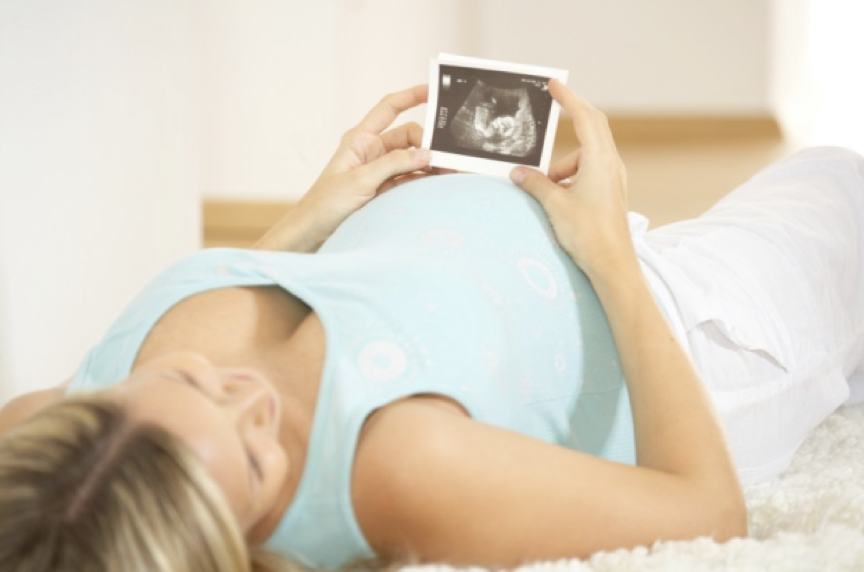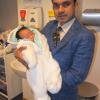“It is my aim to provide the guidance, information and reassurance that each woman needs to enable her to feel completely comfortable in making the pregnancy choices and decisions that are right for her. Of course I want to ensure the safest possible birthing experience for all of my patients, this goes without saying, and I am unbelievably proud of each and every one of the 4000 babies that I have helped into the world. I believe most of all, however, that all pregnant women should be empowered to be able to choose the type of care that is best for them.”
Congratulations, you are pregnant and it is quite understandable that you now want to ensure that you will receive the best possible care throughout your pregnancy and birth of your baby. It is very important that you should be actively involved in all of the decisions relating to your pregnancy and the delivery of your baby and that your needs and wishes are listened to and respected. You will therefore want to do as much research as possible to help you when you come to make those crucial decisions. However, as there is so much information and advice available these days I know that this can sometimes be a confusing or even overwhelming exercise.
Regular Antenatal Checks
If you are feeling this way please remember that the vast majority of pregnancies proceed perfectly normally, without any complications at all for either mother or baby. Furthermore, you will attend regular antenatal check-ups during your pregnancy, which will be an ideal opportunity to ask questions and to chat through any concerns that you might have. You will be monitored closely to ensure that your pregnancy is proceeding properly and you will be carefully assessed so that if there are any underlying risk factors these can be identified and acted upon. In other words there will be plenty of assistance and guidance on offer to you over the next weeks and months.
Nevertheless, I would like to make a number of general points here that I hope will be helpful to you as your pregnancy progresses.
Eating and keeping well during pregnancy
Making sure that you eat healthily during your pregnancy is extremely important, both for you and your baby. If you eat a balanced, healthy diet including plenty of fruit and vegetables you will get the majority of the vitamins and minerals that you need to stay well and to provide for the needs of your growing baby from your food alone. However, in addition, it is sensible to take vitamin D supplements throughout the whole of your pregnancy together with folic acid for the first 12 weeks.


Sensible Pregnancy Precautions and Folate
Folic acid is important as it can help to prevent certain birth defects called neural tube defects. A neural tube defect is a serious congenital defect of the central nervous system, including the spinal cord, skull and brain, which results when the neural tube fails to close normally during the first 30 days of foetal development. The three main types of neural tube deficit areanencephaly, encephalocele, and spina bifida. Folate, which is the naturally occurring form of folic acid, is one of the B-group vitamins and it is present in such things as green vegetables such as spinach and peas, as well as in brown rice, chickpeas and fortified breakfast cereals. There are also certain foods that it is sensible to avoid when you are pregnant, either because they can make you ill or because they could pose a risk for your baby. These include mould-ripened soft cheese such as brie and camembert and soft blue-veined cheeses like gorgonzola. The reason for this is that it is quite possible for soft cheese to become contaminated during the production process with bacteria including listeria, which could harm your baby. You should also avoid eating paté, raw or under-cooked meat, liver products and raw shellfish. It is also advisable to avoid drinking alcohol while you are pregnant.
Risks associated with being overweight during pregnancy
Being a healthy weight when you are pregnant protects your health and the wellbeing of your baby. This is because being overweight during pregnancy, carries a number of potential risks for both you and your baby. As a result, if you are overweight, whichis usually defined as having a Body Mass Index (BMI) of over 25,you will need to be monitored very carefully so that if problems do occur they can be handled properly. The complications associated with being overweight can occur during the pregnancy, at labour and after birth and include the following:
During pregnancy
- · gestational diabetes –a type of diabetes that develops during pregnancy
- · pre-eclampsia – a condition that occurs during pregnancy and is characterised by high blood pressure and the presence of protein in the urine
- · abnormalities with the growth and development of the baby
During labour
- · difficulties in providing appropriate pain relief
- · difficulties monitoring the baby’s heartbeat
- · need for an emergency caesarian section
- · increased risk of complications related to the caesarian section
After the birth
- · problems with breast feeding
- · increased risk of wound infection
- · increased risk of blood clots
- · postnatal depression
- · high birth-weight baby
Routine tests carried out during your pregnancy
During the course of your pregnancy you will attend regular antenatal appointments when tests will be carried out to ensure that everything is proceeding properly. At each appointment your blood pressure will be checked and a urine test will be performed to check for the presence of protein, which may indicate pre-eclampsia, glucose (sugar), which may indicate diabetes or bacteria that could indicate an infection requiring antibiotics. At the beginning of your pregnancy you will have a sample of blood taken that will establish your blood group and check for anaemia, usually caused by a lack of iron, any haemoglobin disorders (such as sickle cell anaemia), your rubella status and any rarer infections (such as Hepatitis). This will be repeated usually around 28 weeks.
Ultrasound Scans

You will also normally be offered two ultrasound scans, one between 10 and 14 weeks, which is a dating scan to work out when your baby is due; and the second one between 18 and 20 weeks to check the development of your baby.
Common pregnancy problems
Most pregnancies, of course, proceed without any difficulties, however sometimes complications do occur. The most common pregnancy complications are miscarriage, ectopic pregnancy, pre-eclampsia, gestational diabetes, and placenta praevia.
What is miscarriage?
A miscarriage is when the pregnancy is lost within the first 20 weeks. They occur more often than people think as up to 20% of all confirmed pregnancies end in miscarriage, with 80% occurring in the first 12 weeks. They can happen for many reasons but we believe that most occur as a result of some form of chromosomal abnormality in the developing embryo.
What is ectopic pregnancy?
Sometimes the fertilised egg will implant itself somewhere outside the uterus and when this happens it is called an ectopic pregnancy. The vast majority of ectopic pregnancies occur in one of the fallopian tubes although occasionally an egg implants in an ovary, in the cervix or in the abdomen. If the embryo continued to develop in the fallopian tube it could cause a rupture resulting in damage to the tube and in internal bleeding that could be fatal. Unfortunately, there is no way of transplanting the embryo into the uterus and therefore ending the pregnancy is the only option.
What is pre-eclampsia?
Pre-eclampsia is a complicated condition that affects up to 10% of pregnancies and it usually occurs in the second half of the pregnancy. In most cases it develops near to the due date and is relatively mild but severe pre-eclampsia can result in serious problems for both mother and baby. This is because pre-eclampsia makes blood vessels constrict and this results in high blood pressure and a reduced blood flow, which can affect the organs in the body including the liver, kidneys, and brain. This change to the blood vessels can in turn cause the capillaries to release fluid into surrounding tissue causing oedema or swelling. A reduced blood flow to the uterus can also present problems for the developing baby.
Sometimes women with pre-eclampsia go on to develop a disorder called HELLP syndrome, which stands for Haemolysis, Elevated Liver enzyme and Low Platelets. This puts both mother and baby at a higher risk of the same kind of problems that are caused by severe pre-eclampsia.
Occasionally, pre-eclampsia can lead to eclampsia, which causes seizures. Women suffering from severe pre-eclampsia will usually be given medication to prevent this.
What is gestational diabetes?
Diabetes occurring during pregnancy is one of the most common complications. Diabetes is a complex condition but in essence it means that there is too much glucose (sugar) in the blood and if during pregnancy it is not detected and treated it can increase the risk of harm to the baby. It usually develops after the 26 to 28 week mark and disappears once the baby is born. It can be controlled with diet and exercise alone but some women will require medication.

Gestational diabetes normally has no actual symptoms and for this reason it is usual to have a glucose-screening test at around the 28 week mark.
What is placenta praevia?
With placenta praevia the placenta is lying unusually low in the uterus, next to or covering the cervix. This is not a problem in the early stages of pregnancy but if the placenta remains low it can cause bleeding as the pregnancy progresses, which can lead to complications. However, only a small number of women who have placenta praevia in the middle of their pregnancy will still have it when they come to give birth as frequently the placenta will move up and away from the cervix. By the end of pregnancy around one in 200 women will have placenta praevia to some degree but this is usually partial and presents no problem. Women who have complete placenta praevia will need a caesarean section delivery.
Birthing plans and the delivery of your baby

It is very sensible for each pregnant woman to devise a birth plan that feels right for her. I am personally very flexible with birth plans and I will always try to accommodate them providing that it is safe to do so. I would encourage women to chat through their birth plans with their obstetrician well in advance of the actual birth so that if any problems are foreseen these can be properly discussed and resolved. The issue of pain relief is also one that should be based entirely upon the wishes of each individual woman. However, I would advise epidural analgesia if there are particular medical conditions like high blood pressure. In certain situations Caesarean section delivery will be necessary. This is a surgical procedure that involves making a cut in the abdomen and womb to enable the baby to be removed. It is carried out under local anaesthetic so that the lower part of the body is numbed. Sometimes this can be an unplanned procedure that becomes necessary due to complications during the labour or it can be planned (elective). I recommend a planned Caesarean delivery if the mother has had two or more Caesarean sections previously, if there is placenta praevia, with a breech baby or when the baby is very large (4.25 to 4.5kg). Not infrequently the pregnancy will go beyond the due date and this is not a problem providing there are no maternal or foetal concerns. However, ideally the baby should be delivered before 42 weeks and labour would normally be induced at this point if it has not commenced by this stage.
Relax and Enjoy this Special Time
In conclusion then, please always try to remember that pregnancy and birth are natural processes and wherever possible you should feel able to relax and enjoy this special time. Most of all have the confidence to make the choices that are right for you.



